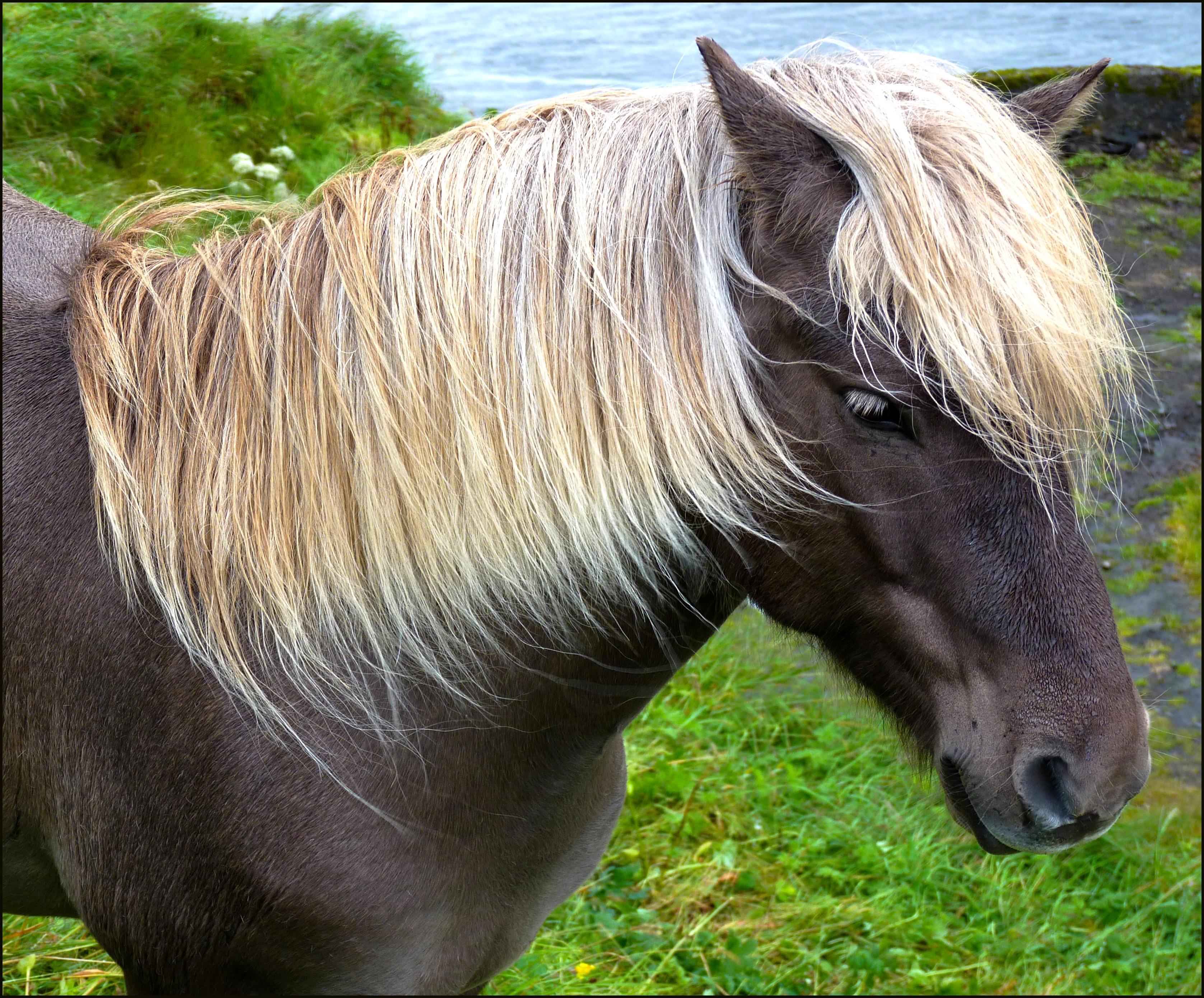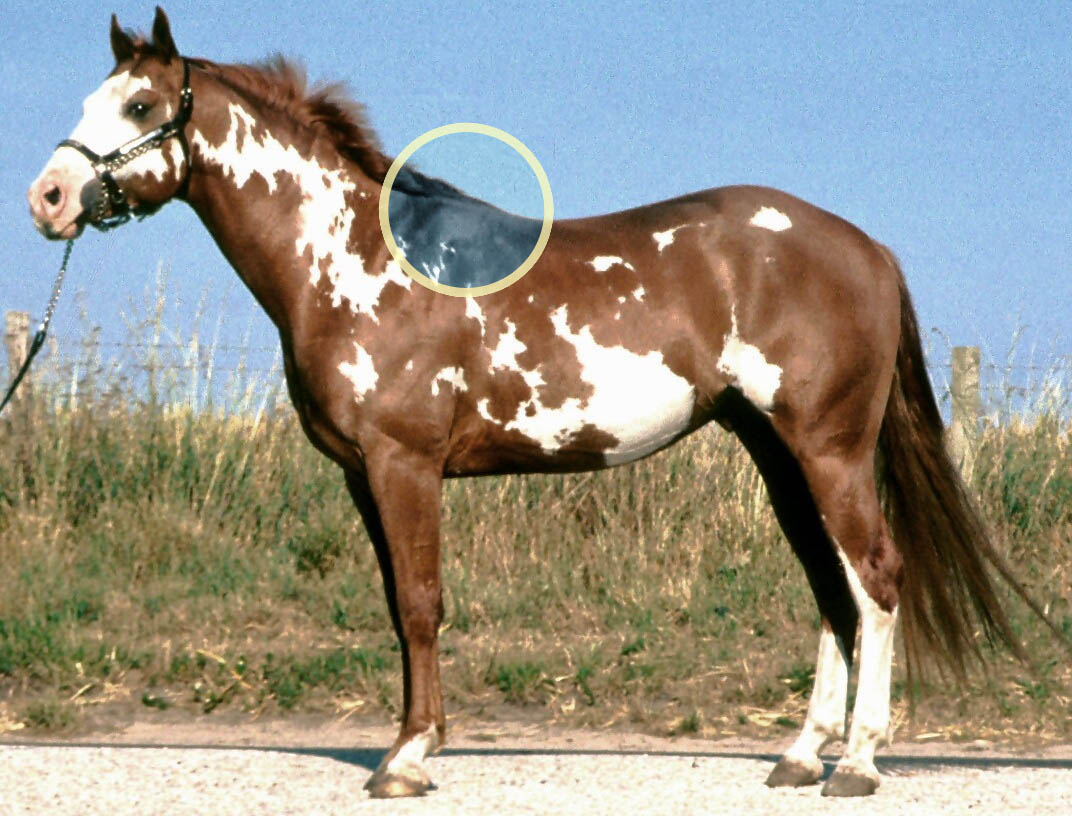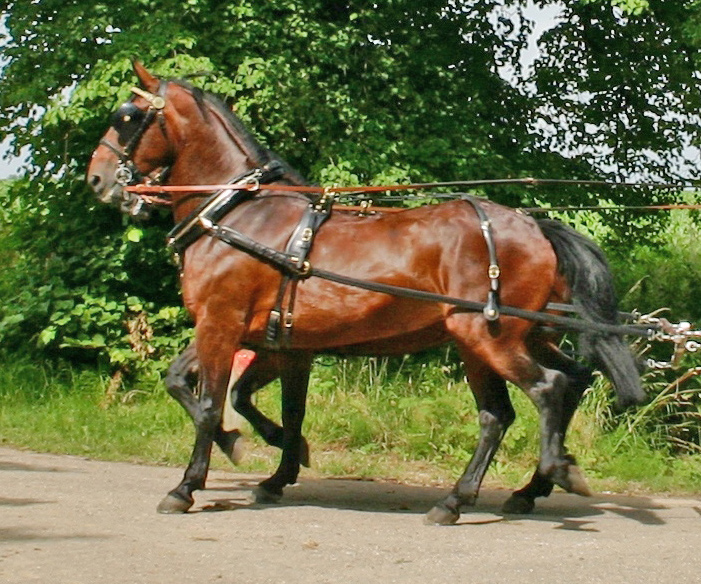|
Vlaamperd
The is a South African breed of light draught or harness horse; it is also suitable for riding and is used in dressage. It was bred in the Western Cape region of South Africa in the early twentieth century, and resulted from cross-breeding of local mares with imported European stallions, particularly Friesians. The horses are usually black, though mares may be dark seal brown. A stud-book was started in 1983. History The Vlaamperd derives from the now-extinct Hantam Horse or Cape Horse, a riding horse bred in the former Cape Province, particularly after 1814 when Lord Charles Somerset imported Thoroughbred stallions from Britain. Shortly after the end of the Second Boer War in 1902, a funeral director in Cape Town imported a few Friesian stallions. They were shipped from Antwerp in Belgium, supposedly because exports of Friesians from Holland were not permitted at the time; for this reason Friesians came to be known in South Africa as , meaning 'Flemish Horses'. The Vl ... [...More Info...] [...Related Items...] OR: [Wikipedia] [Google] [Baidu] |
Flemish Horse
The Flemish Horse, , , is a Belgian list of horse breeds, breed of heavy draught horse. It originates in – and is named for – Flanders, the northern part of Belgium, where its history goes back to Mediaeval times. In the late nineteenth century it was merged with the other heavy horses of Belgium into the Belgian Draught. It was re-created in the late twentieth century and recognised as a horse breed, breed in 2005. In the twenty-first century it is an endangered breed, with fewer than a hundred living animals. History The heavy horses of Flanders became famous in Mediaeval times. They were among the gifts sent by Charlemagne to the Abbasid caliph Haroun ar-Rashid in 807. The breed became extinct in the nineteenth century, when it was merged with the Brabant (horse), Brabant to create the Belgian Draught. From about 1993 it was recreated, partly from stock kept by Amish people in the United States. A breed association, Het Vlaams Paard, was formed in 1999. In 2005 ... [...More Info...] [...Related Items...] OR: [Wikipedia] [Google] [Baidu] |
List Of Horse Breeds
The following list of horse and pony horse breed, breeds includes standardized breeds, some strains within breeds that are considered distinct populations, types of horses with common characteristics that are not necessarily standardized breeds but are sometimes described as such, and terms that describe groupings of several breeds with similar characteristics. While there is no single definition of the term "breed", it can be defined as a population sharing common ancestry, which has been subjected to similar selection objectives, and which conforms to certain established “breed standards”. Its members may be called ''purebred''. In most cases, bloodlines of horse breeds are recorded with a breed registry. The concept is somewhat flexible in horses, as open stud books are created for recording pedigrees of horse breeds that are not yet fully true-breeding. Registries are considered the authority as to whether a given breed is listed as a "horse" or a "pony". There are also a ... [...More Info...] [...Related Items...] OR: [Wikipedia] [Google] [Baidu] |
Friesian (horse)
The Friesian ( in Dutch; in West Frisian) is a horse breed originating in Friesland in north Netherlands. The breed nearly became extinct on more than one occasion. It is classified as a light draught horse, and the modern day Friesian horse is used for riding and driving. The Friesian horse is most known for its all-black coat colour, its long flowing mane and tail, feathering on its legs, a high head carriage, and high stepping action. Breed characteristics The breed has powerful overall conformation and good bone structure, with what is sometimes called a Baroque body type. Friesians have long arched necks, well-chiseled short-ears, and Spanish-type heads. They have sloping shoulders, compact muscular bodies with sloping hindquarters and a low-set tail. Limbs are short and strong, with feathering—long hair on the lower legs. A Friesian horse also has a long, thick mane and tail, often wavy. The breed is known for a brisk, high-stepping trot. The Friesian is con ... [...More Info...] [...Related Items...] OR: [Wikipedia] [Google] [Baidu] |
Funeral Director
A funeral director, also known as an undertaker or mortician (American English), is a professional who has licenses in funeral arranging and embalming (or preparation of the deceased) involved in the business of funeral rites. These tasks often entail the embalming and burial or cremation of the dead, as well as the arrangements for the funeral ceremony (although not the directing and conducting of the funeral itself unless clergy are not present). Funeral directors may at times be asked to perform tasks such as dressing (in garments usually suitable for daily wear), casketing (placing the corpse in the coffin), and Desairology: Funeral Cosmetology, cossetting (applying any sort of cosmetic or substance to the best viewable areas of the corpse for the purpose of enhancing its appearance) with the proper licenses. A funeral director may work at a funeral home or be an independent employee. Etymology The term ''mortician'' is derived from the Latin word ('death') with the end ... [...More Info...] [...Related Items...] OR: [Wikipedia] [Google] [Baidu] |
Carriage Horse
Driving means guiding a horse in harness to pull a load such as a horse-drawn vehicle, a farm implement, or other load. Horses, ponies, donkeys, mules, and other animals can be driven. Typical horse-drawn vehicles are wagons, carriages, carts, and sleighs. Driving activities include pleasure driving, racing, farm work, showing horses, and other competitions. Styles For horse training purposes, "driving" may also include the practice of ''long-lining'' (''long reining''), wherein a horse is driven without a cart by a handler walking behind or behind and to the side of the animal. This technique is used in the early stages of training horses for riding as well as for driving. Horses, mules and donkeys are driven in harness in many different ways. For working purposes, they can pull a plow or other farm equipment designed to be pulled by animals. In many parts of the world they still pull carts, wagons, horse-drawn boats or logs for basic hauling and transportation. They ma ... [...More Info...] [...Related Items...] OR: [Wikipedia] [Google] [Baidu] |
Croup (anatomy)
The rump or croup, in the external morphology of an animal, is the portion of the posterior dorsum – that is, posterior to the loins and anterior to the tail. Anatomically, the rump corresponds to the sacrum. The tailhead or dock is the beginning of the tail, where the tail joins the rump. It is known also as the base or root of the tail, and corresponds to the human sacrococcygeal symphysis. In some mammals the tail may be said to consist of the tailbone (meaning the bony column, muscles, and skin) and the skirt (meaning the long hairs growing from the tailbone). In birds, similarly, the tail consists of tailbone and tailfan (tail fan). Some animals are subjected to docking, the amputation of the tailbone at or near the dock. These include dogs, cats, sheep, pigs, and horses. Humans have a remnant tail, the coccyx, and the human equivalent of docking is coccygectomy. Usage varies from animal to animal. Birds and cattle are said to have a rump and tailhead. Dogs ... [...More Info...] [...Related Items...] OR: [Wikipedia] [Google] [Baidu] |
Mane (horse)
On horses, the mane is the hair that grows from the top of the neck of a horse or other equine, reaching from the poll (horse), poll to the withers, and includes the forelock or foretop. It is thicker and coarser than the rest of the horse's coat, and naturally grows to roughly cover the neck. Heredity plays a role, giving some horses a longer, thicker mane, and others a shorter, thinner one. Some horses, such as those used in circuses or in mounted displays such as Cavalia, have manes allowed to grow down to their knees. Others have their manes deliberately shaved completely off for style or practical purposes. When ungroomed, however, the mane usually grows no longer than the width of the horse's neck, as natural wear and tear limit its potential length. The mane is thought to keep the neck warm, and possibly to help water run off the neck if the animal cannot obtain shelter from the rain. It also provides some fly protection to the front of the horse, although the tail is us ... [...More Info...] [...Related Items...] OR: [Wikipedia] [Google] [Baidu] |
Withers
Withers are the ridge between the shoulder blades of an animal, typically a quadruped. In many species, this ridge is the tallest point of the body. In horses and dogs, it is the standard place to measure the animal's height. In contrast, cattle are often measured to the top of the hips. The term (pronounced ) derives from Old English ''wither'' ("against'), because the withers are the part of a Working_animal#Draft_animals , draft animal that pushes against a Mechanical load, load. Horses The withers in horses are formed by the dorsal spinal processes of roughly the 3rd through 11th thoracic vertebrae, which are unusually long in this area. Most horses have 18 thoracic vertebrae. The processes at the withers can be more than long. Since they do not move relative to the ground as the horse's head does, the withers are used as the measuring point for the height of a horse. Horses are sometimes measured in hand (unit), hands – one hand is . Horse heights are extremely ... [...More Info...] [...Related Items...] OR: [Wikipedia] [Google] [Baidu] |
Conservation Status
The conservation status of a group of organisms (for instance, a species) indicates whether the group still exists and how likely the group is to become extinct in the near future. Many factors are taken into account when assessing conservation status: not simply the number of individuals remaining, but the overall increase or decrease in the population over time, breeding success rates, and known threats. Various systems of conservation status are in use at international, multi-country, national and local levels, as well as for consumer use such as sustainable seafood advisory lists and certification. The two international systems are by the International Union for Conservation of Nature (IUCN) and The Convention on International Trade in Endangered Species of Wild Fauna and Flora (CITES). International systems IUCN Red List of Threatened Species The IUCN Red List of Threatened Species by the International Union for Conservation of Nature is the best known worldwide conse ... [...More Info...] [...Related Items...] OR: [Wikipedia] [Google] [Baidu] |
Bloemfontein
Bloemfontein ( ; ), also known as Bloem, is the capital and the largest city of the Free State (province), Free State province in South Africa. It is often, and has been traditionally, referred to as the country's "judicial capital", alongside the legislative capital Cape Town and Administration (government), administrative capital Pretoria, although the highest court in South Africa, the Constitutional Court of South Africa, Constitutional Court, has been in Johannesburg since 1994. Situated at an elevation of above sea level, the city is home to 256,185 (as of 2011) residents and forms part of the Mangaung Metropolitan Municipality which has a population of 747,431. It was one of the host cities for the 2010 FIFA World Cup. The city of Bloemfontein hosts the Supreme Court of Appeal (South Africa), Supreme Court of Appeal, the Franklin Game Reserve, :af:Naval Hill, Naval Hill, the Maselspoort, Maselspoort Resort and the Sand du Plessis Theatre. The city hosts numerous muse ... [...More Info...] [...Related Items...] OR: [Wikipedia] [Google] [Baidu] |
Breed Society
Breed clubs are associations or clubs with activities centered on a single, specific breed of a particular species of domesticated animal. The purpose of the association will vary with the species of animal and the goals and needs of the members of the association. Breed associations or clubs may vary in their goals, activities and nomenclature from country to country, even for the same breed. Most domesticated animals, whether they are agricultural animals such as cattle, llamas, poultry, sheep and pigs, or companion animals such as pigeons, horses, cats and dogs, have breed clubs associated with the breed. Purpose In general, breed clubs and associations create a written definition of the breed (called a breed standard) for the breed with which the organization is associated. Breed clubs also maintain important records, and provide members with information. Many breed associations also have a social component, organising various activities such as shows. In addition, they may ... [...More Info...] [...Related Items...] OR: [Wikipedia] [Google] [Baidu] |
Cleveland Bay
The Cleveland Bay is a breed of horse that originated in England during the 17th century, named after its colouring and the Cleveland district of Yorkshire. It is a well-muscled horse, with legs that are strong but short in relation to the body. The horses are always bay in colour, although a few light hairs in the mane and tail are characteristic of some breed lines. It is the oldest established horse breed in England. The ancestors of the breed were developed during the Middle Ages for use as pack horses, when they gained their nickname of "Chapman Horses". These pack horses were cross-bred with Andalusian and Barb blood, and later with Arabians and Thoroughbreds, to create the Cleveland Bay of today. Over the years, the breed became lighter in frame as they were employed more as carriage and riding horses. The popularity of the Cleveland Bay has greatly fluctuated since it was first imported to the United States in the early nineteenth century. Despite serious decl ... [...More Info...] [...Related Items...] OR: [Wikipedia] [Google] [Baidu] |




